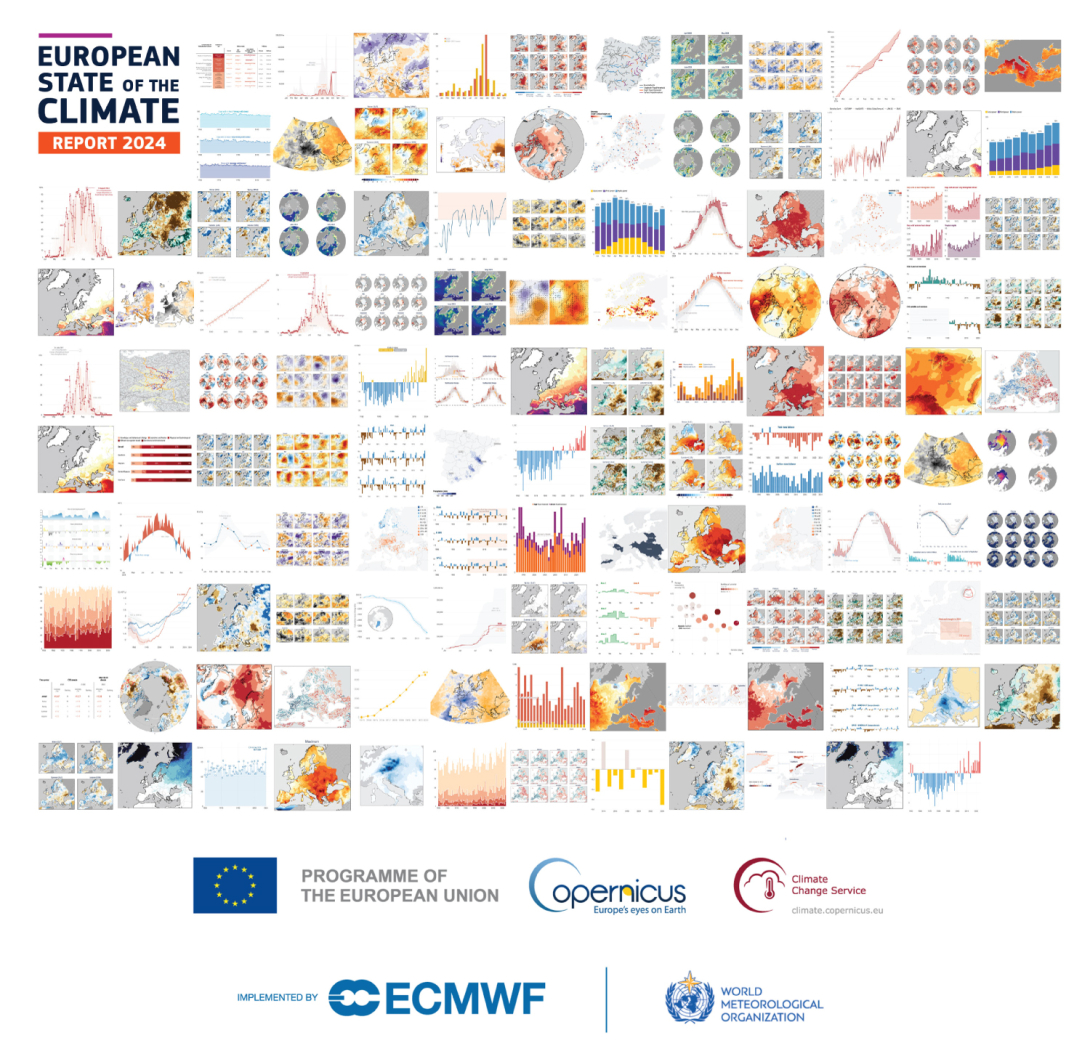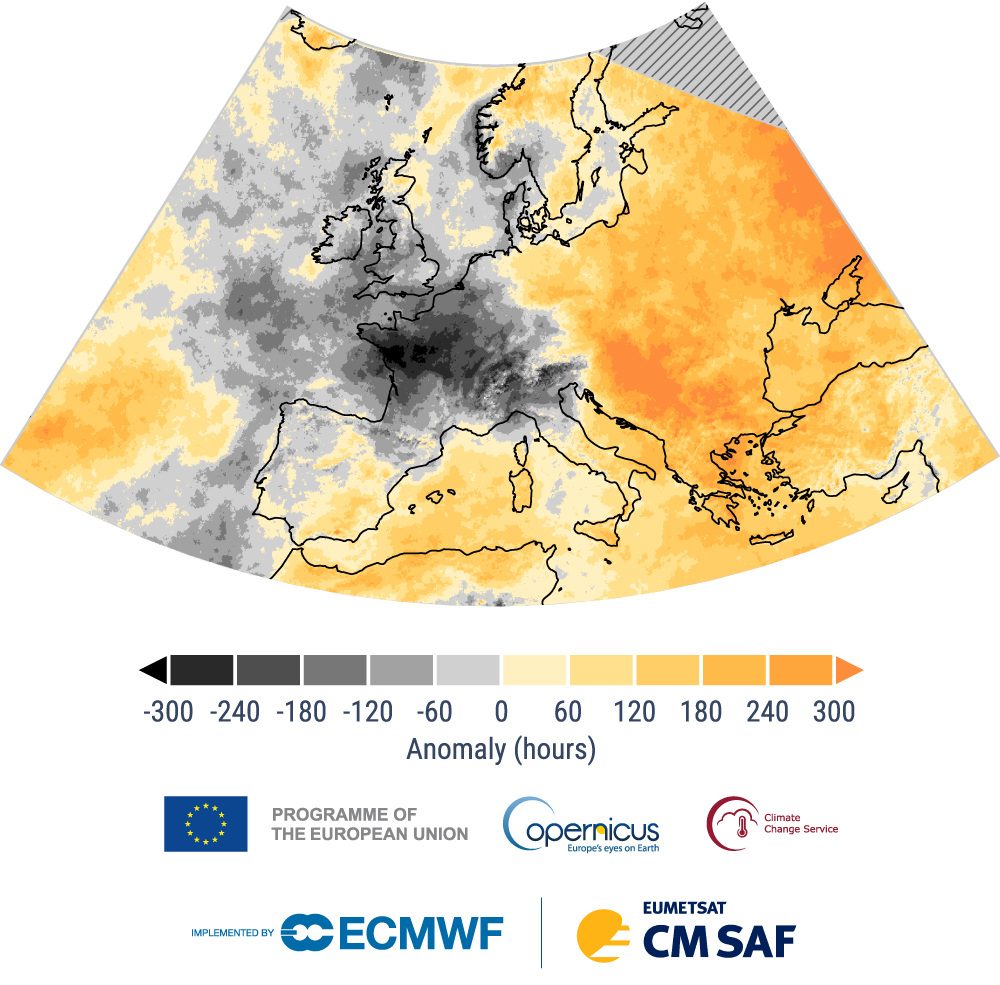On 15 April 2025, the latest European State of the Climate (ESOTC) report was published (https://climate.copernicus.eu/esotc/2024). ESOTC 2024 provides a detailed overview of climate conditions in Europe and the Arctic in 2024, covering a wide range of climate variables and topics including temperature, heat and cold stress, precipitation, wildfires, glaciers, sea ice, renewable energy resources and many more.
‘Spotlight’ topics this year include flooding across Europe, and extreme heat and drought in southeastern Europe during the summer. There is also an overview of key findings for trends related to these topics based on information from the Intergovernmental Panel on Climate Change (IPCC). In addition, the report discusses climate policy and action, focusing on the resilience of the built environment to climate extremes, and provides updates on long-term trends in key climate indicators for the globe and for Europe. ESOTC aims to reach a broad and non-specialist audience, including policymakers, scientists, students, journalists and the wider public.
What goes into producing the report?
ESOTC 2024 is published jointly by the EU’s Copernicus Climate Change Service (C3S), implemented by ECMWF, and the World Meteorological Organization (WMO). It is the result of a collaborative effort involving around 100 scientists from the Copernicus and WMO networks and beyond.
Coordinated by an editorial team at ECMWF, in collaboration with the WMO, this large team of scientists analyse the latest data from around 40 different datasets and report on approximately 40 climate variables, indicators and topics across the report’s 19 sections. The report is reviewed by experts from across both organisations’ networks, and by representatives from national meteorological and hydrological services.
How is the report presented?
ESOTC 2024 features a wide range of resources to highlight and communicate the current state of the climate, making this broad and complex topic more accessible:
- The ESOTC website enables navigation of the full report, including a range of interactive charts.
- The ESOTC graphics gallery showcases 130 images, with one-click data downloads to easily explore the data behind them (see the first figure).
- An interactive map highlights key events of 2024, alongside examples of climate resilience and adaptation initiatives in European cities.
- A summary distils and highlights key messages from the report, telling the story of the data behind them through a set of infographics.
- A PDF version of the full report is easily browsable.
- An update of key climate indicators and the ‘Climate Indicator dashboard’ (https://climate.copernicus.eu/climate-indicators) are provided.
The graphics gallery and full report PDF are new features for ESOTC 2024.

Data visualisation plays a central role, from the bespoke cover art to mobile-friendly responsive charts, while careful copy-editing ensures the language is clear and accessible to a wide audience. The WMO also provides translations of the summary into multiple languages.
How are the findings shared with the public?
The findings of ESOTC 2024 reach a wide audience through press coverage and public outreach coordinated by ECMWF's Copernicus communications team. An embargoed media briefing took place on 10 April, followed by an online launch event on 15 April, where key findings were presented.
What are the key messages?
Since the 1980s, Europe has warmed twice as fast as the global average, making it the fastest-warming continent. In 2024, Europe experienced its warmest year on record.
Europe saw its most widespread flooding since 2013. An estimated 413,000 people were affected by storms and flooding, with at least 335 lives lost. The persistent rainfall from Storm Boris in September caused river flows to reach at least twice the average annual maximum along 8,500 km of rivers. In October, extreme rainfall led to devastating flooding in Valencia, Spain (see the separate article in this Newsletter). According to the IPCC, Europe is one of the regions with the largest projected increase in flood risk.
2024 was also a year of contrasting climate conditions across the continent. Eastern Europe saw warmer-than-average or record-high temperatures throughout much of the year. Southeastern Europe experienced its longest heatwave on record, lasting 13 days, as the summer brought record numbers of ‘strong heat stress’ days and tropical nights to the region.
Western Europe, meanwhile, had one of its ten wettest years in the analysed period since 1950, and cloud cover was above average – in some areas, there were as many as 350 fewer hours of sunshine than average (see the second figure).

The Arctic saw its third-warmest year on record, with contrasting temperature anomalies across the European Arctic during summer. In the east, record-high temperatures contributed to glaciers in Scandinavia and Svalbard experiencing their highest annual rates of mass loss on record and the largest loss of any glacier region globally.
Svalbard, one of the fastest-warming places on Earth, recorded its highest summer temperature for the third consecutive year. Further west, temperatures were mostly near or below average, and the Greenland Ice Sheet recorded its third-smallest mass loss since 2001.
Where can I find out more?
Visit https://climate.copernicus.eu/esotc/2024 to explore the full report, summary, graphics gallery, interactive key events map, policy sections and more.
The Copernicus Climate Change Service (C3S) is implemented by the European Centre for Medium-Range Weather Forecasts (ECMWF) on behalf of the European Commission.
